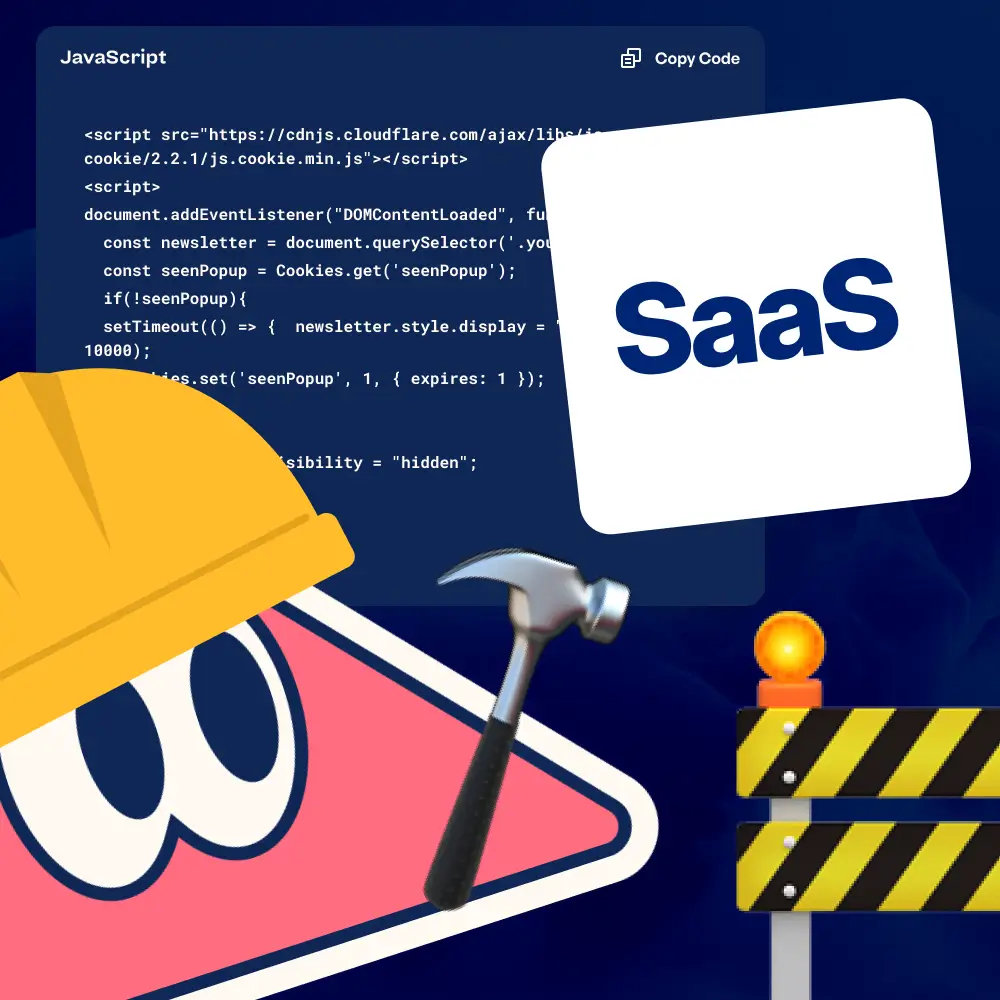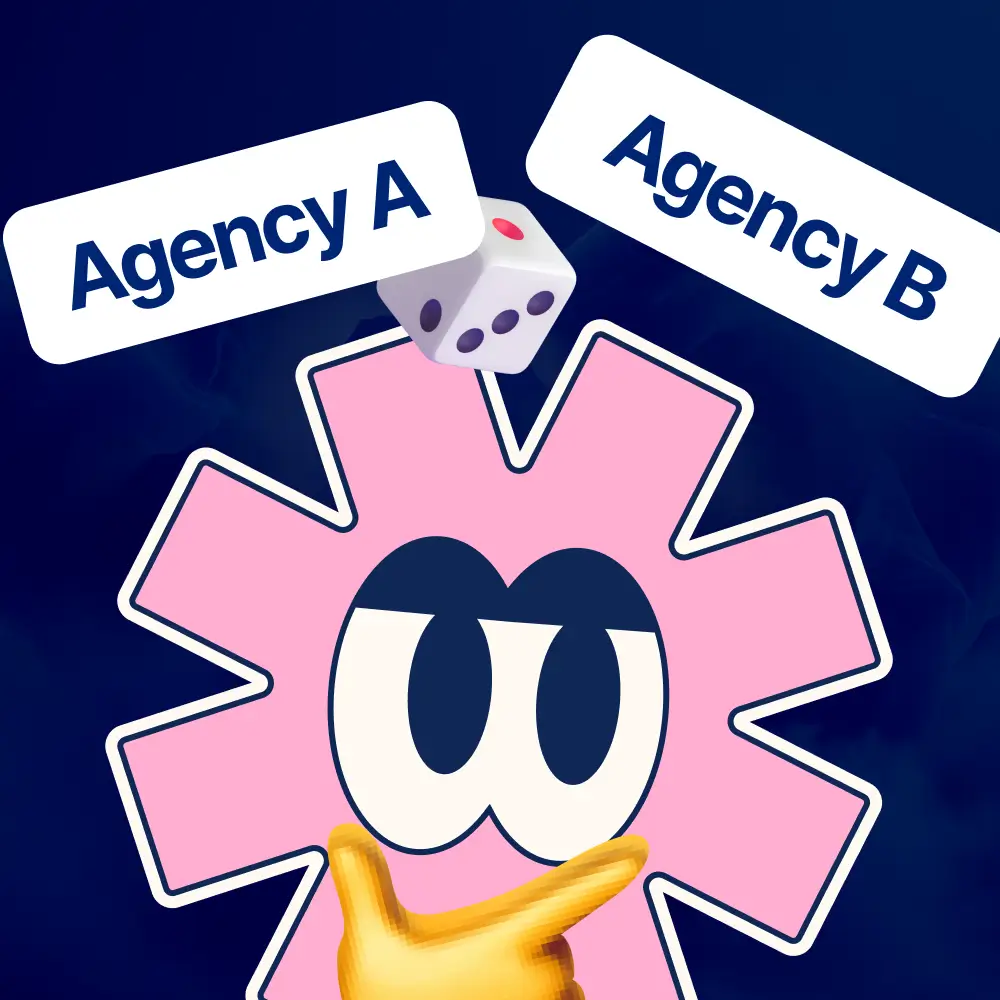WordPress May No Longer be the Solution
WordPress has dominated the web for over a decade, but something's shifting. More businesses are discovering that the platform that once solved their problems is now creating new ones. Plugin conflicts, security headaches, and the constant need for developer intervention are pushing teams toward alternatives.
Enter Webflow – a platform that's quietly revolutionising how websites get built and maintained. But is it just hype, or is there something substantial behind the growing migration?
Having built over 50+ websites on WordPress and 50+ sites on Webflow, our team at What IF Web has experienced firsthand the benefits and challenges of both platforms from both a developer's and client's perspective. While WordPress was the go-to choice for years, Webflow has established itself as a serious contender among teams who want more control, fewer headaches, and faster results.
Let us break down why so many businesses are making the switch and whether it might be right for your next project, based on real experience with both platforms.
True Content Independence for Your Team
Here's what gets marketing teams excited about Webflow: you can launch campaigns without waiting in the development queue. This means faster time-to-market, lower campaign costs, and the ability to respond to opportunities while they're still hot.
With Webflow, your marketing team can jump in and update content, swap out images, adjust messaging, and even build entire landing pages using pre-built components. The visual editor is intuitive enough that anyone who can use PowerPoint can confidently make changes without fear of breaking the site.
But here's where it gets really powerful for marketers – you can create campaign templates and reusable components that maintain brand consistency while giving your team the freedom to experiment. Need to quickly launch a new product page or test different messaging for a campaign? You can build variations rapidly without waiting for development resources. This type of rapid experimentation is invaluable for teams running multiple campaigns and needing to pivot quickly.
Real-World Marketing Success: Interns in Asia Case Study
When Interns in Asia migrated from WordPress to Webflow, their marketing team gained the ability to launch campaigns independently and update content 3x faster than before. They went from waiting days for developer updates to making real-time changes themselves, dramatically improving their ability to capitalize on market opportunities and seasonal campaigns.
Read their full migration story to see how the switch transformed their marketing workflow and increased their online visibility by over 20%.
Campaign Management Made Simple
Webflow's content management system is built for marketing teams who need to move fast. You can create campaign-specific content types, set up dynamic landing pages, and manage all your campaign assets through an interface that doesn't require technical training.
Here's something that often gets overlooked: when you invest in Webflow, you're investing in a platform that's actively building features marketing teams need. You get access to customer support, regular feature updates, and continuous improvements that help your campaigns perform better.
Compare that to WordPress, where you're often dealing with multiple plugin vendors when something breaks, or paying extra for premium support from various developers. With Webflow, you have a dedicated team working to make your marketing efforts more successful.
Client Success Stories
"We worked with the team at WhatIF to upgrade our website design and performance. They have been fantastic to work with and exceeded our expectations! They were knowledgeable and provided expert advice throughout the project. They produced A+ outcomes within the timeline and budget agreed upon. I highly recommend them to anyone needing a Webflow build or redesign." - Jamie Frew, Carepatron
"Our company's online presence has been transformed into a visually stunning and highly functional website. Tom's design expertise shines through in the website's aesthetics, capturing our brand identity perfectly. Isaac's technical skills and knowledge of Webflow ensured a seamless user experience with responsive and efficient functionality. The What IF team's dedication and proficiency in utilizing Webflow have truly exceeded our expectations, making them a top choice for website development services." - Derek Wang, Spover
Faster Sites = Better Campaign Performance
Let's talk about what really matters to marketers: results. In a world where page speed directly impacts your conversion rates and ad costs, Webflow gives your campaigns a competitive edge. The platform automatically optimizes your sites for speed, which means better user experience, higher conversion rates, and lower bounce rates.
Your campaigns are hosted on enterprise-level infrastructure with 99.99% uptime and lightning-fast loading times globally. This means your Black Friday landing page won't crash when traffic spikes, and your international campaigns will load quickly for users worldwide.
Webflow also handles all the technical SEO fundamentals automatically, so your organic campaigns perform better from day one. Faster loading pages reduce bounce rates and improve user experience, helping you get more value from your paid traffic investment.
No more worrying about site crashes during big campaigns or losing conversions to slow loading times. Webflow handles the technical performance automatically, so you can focus on creating campaigns that convert.
Say Goodbye to Security Headaches
If you've ever worked with WordPress, you know the plugin struggle is real. That moment when you wake up to a broken site because Plugin A decided it doesn't like Plugin B anymore? Yeah, Webflow eliminates that entirely.
With Webflow, you're working with a unified platform where everything is built to work together seamlessly. You'll never need to worry about updating software or managing outdated plugins that could break your site. As Webflow puts it perfectly: "you're always on the latest version, updated automatically in a secure sandbox with zero downtime."
Security is where Webflow really shines compared to WordPress. With WordPress, you're constantly managing security updates, plugin vulnerabilities, and potential breaches. Every plugin is a potential security risk, and keeping everything updated and compatible is an ongoing challenge.
Webflow eliminates this entirely. Built-in SSL for all sites, automatic security updates, and no risk-prone plugins to manage. The platform handles all security measures automatically in their secure sandbox environment, so we can focus on building great experiences rather than worrying about the latest security threats.
This isn't just about convenience – it's about peace of mind. No more spending hours troubleshooting conflicts between different plugins. Your site just works, consistently.
Build Campaigns That Convert
This is where Webflow really shines for marketing teams. The platform gives you complete creative control to build landing pages, campaign sites, and conversion-focused experiences that look exactly how you envisioned them – without compromise.
Unlike WordPress where you're often constrained by theme limitations or need to wait for custom development, Webflow's visual editor lets you create pixel-perfect designs that match your brand and conversion goals. You get the creative freedom of custom design with the speed and agility your campaigns demand.
Plus, you can see how your campaigns look on different devices as you build them, making adjustments in real-time. No more surprises when you check your mobile conversion rates!
See examples of our Webflow work to understand the design flexibility this platform offers for marketing campaigns.
The Bottom Line
Look, WordPress isn't going anywhere, and it's still a solid choice for many projects. But if you're a business that values speed, reliability, and empowering your team to work independently, Webflow offers some compelling advantages.
The platform is particularly powerful for teams that need to move fast, experiment frequently, and maintain professional-looking sites without the technical overhead.
What's especially exciting is that Webflow is actively building for the future – integrating AI-powered features, advanced localisation options, and visual-first design capabilities that keep pace with modern web development trends. While WordPress often feels like it's catching up to modern standards, Webflow is designed with them in mind.
Whether Webflow is right for you depends on your specific needs, but if you're tired of plugin conflicts, want to give your team more independence, and value a platform that just works out of the box, it might be time to give Webflow a closer look.
Ready to Make the Switch?
The web development landscape is changing, and tools like Webflow are leading the charge toward more accessible, powerful, and user-friendly website creation. The question isn't whether no-code platforms will become mainstream – they already are. The question is whether you'll be ready to take advantage of what they offer.
Take the next step:
- Schedule a free Webflow consultation to discuss your specific needs
- Get a migration quote for your current WordPress site by clicking the quote button above
- Start with Webflow's free plan to experience the visual editor yourself
Sometimes the best way to understand the difference is to experience it firsthand. We'd love to show you how Webflow could transform your website workflow and business results.




